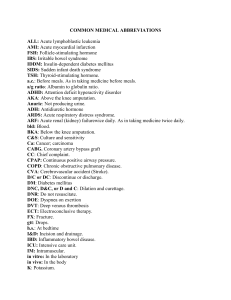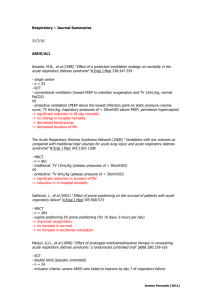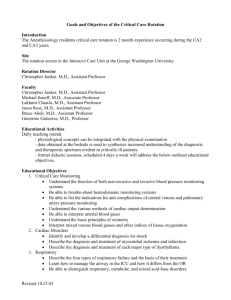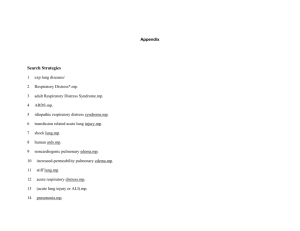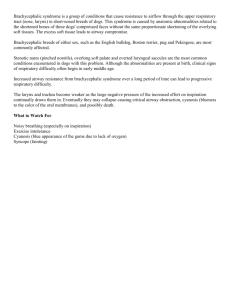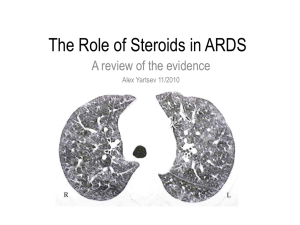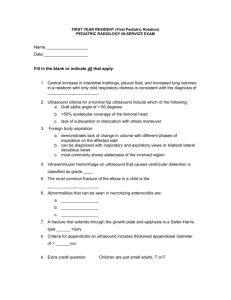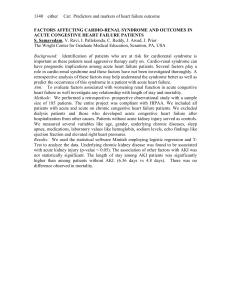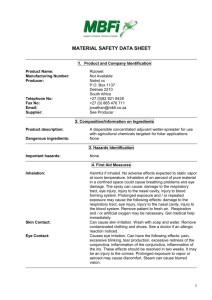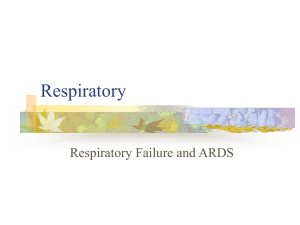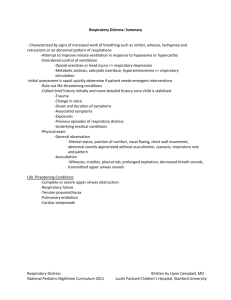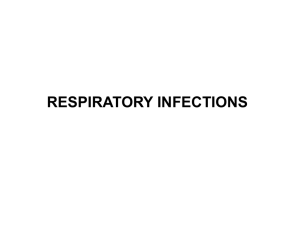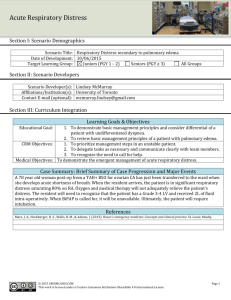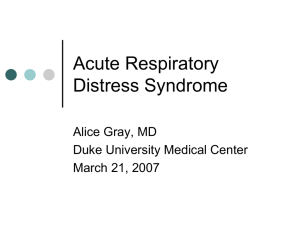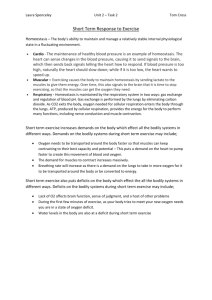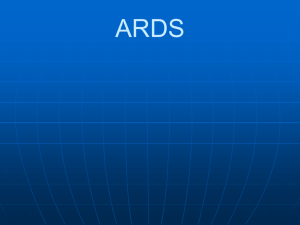Critical Care Nursing: Synergy for Optimal Outcomes
advertisement
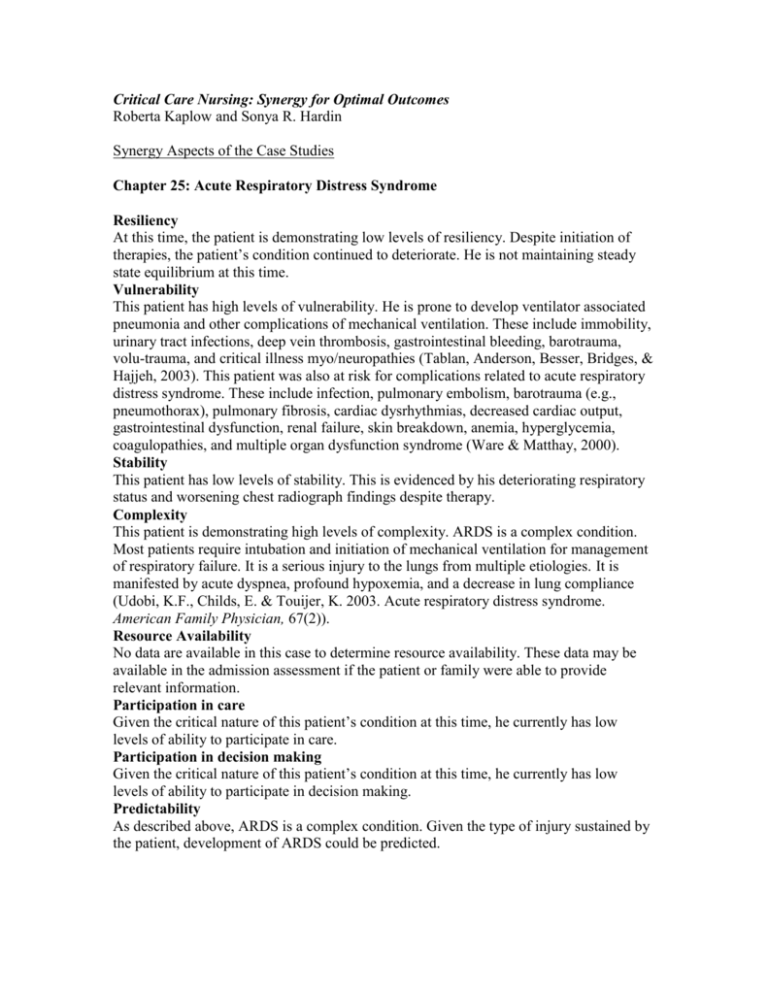
Critical Care Nursing: Synergy for Optimal Outcomes Roberta Kaplow and Sonya R. Hardin Synergy Aspects of the Case Studies Chapter 25: Acute Respiratory Distress Syndrome Resiliency At this time, the patient is demonstrating low levels of resiliency. Despite initiation of therapies, the patient’s condition continued to deteriorate. He is not maintaining steady state equilibrium at this time. Vulnerability This patient has high levels of vulnerability. He is prone to develop ventilator associated pneumonia and other complications of mechanical ventilation. These include immobility, urinary tract infections, deep vein thrombosis, gastrointestinal bleeding, barotrauma, volu-trauma, and critical illness myo/neuropathies (Tablan, Anderson, Besser, Bridges, & Hajjeh, 2003). This patient was also at risk for complications related to acute respiratory distress syndrome. These include infection, pulmonary embolism, barotrauma (e.g., pneumothorax), pulmonary fibrosis, cardiac dysrhythmias, decreased cardiac output, gastrointestinal dysfunction, renal failure, skin breakdown, anemia, hyperglycemia, coagulopathies, and multiple organ dysfunction syndrome (Ware & Matthay, 2000). Stability This patient has low levels of stability. This is evidenced by his deteriorating respiratory status and worsening chest radiograph findings despite therapy. Complexity This patient is demonstrating high levels of complexity. ARDS is a complex condition. Most patients require intubation and initiation of mechanical ventilation for management of respiratory failure. It is a serious injury to the lungs from multiple etiologies. It is manifested by acute dyspnea, profound hypoxemia, and a decrease in lung compliance (Udobi, K.F., Childs, E. & Touijer, K. 2003. Acute respiratory distress syndrome. American Family Physician, 67(2)). Resource Availability No data are available in this case to determine resource availability. These data may be available in the admission assessment if the patient or family were able to provide relevant information. Participation in care Given the critical nature of this patient’s condition at this time, he currently has low levels of ability to participate in care. Participation in decision making Given the critical nature of this patient’s condition at this time, he currently has low levels of ability to participate in decision making. Predictability As described above, ARDS is a complex condition. Given the type of injury sustained by the patient, development of ARDS could be predicted.


